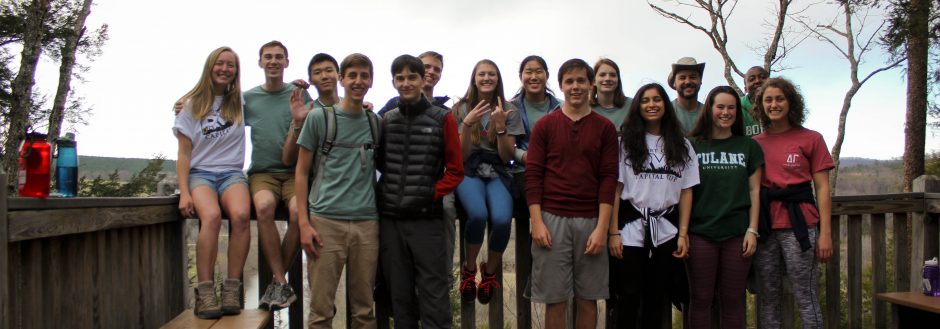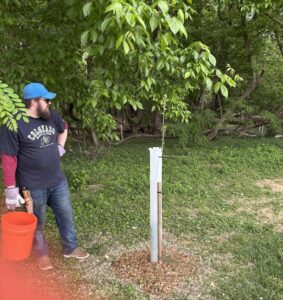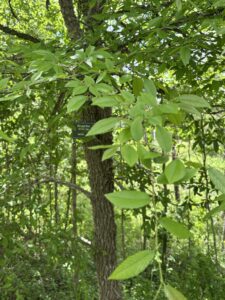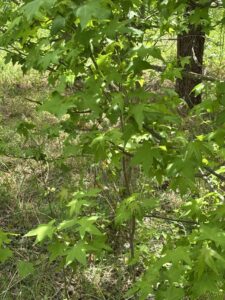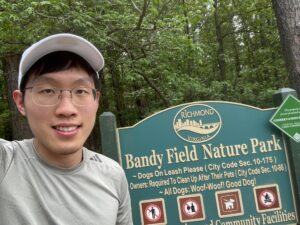It was a wonderful day volunteering at Bandy Field Nature Park. Not only did I get to remove English ivy at the Pine Grove Area of the park and spread wood chips to smother the growth of invasive species, but I also learned about some conservation efforts and native trees in the park from the two managers.
When I entered the park at 1, I saw many volunteers digging a big pile of wood chips using shovels and placing them into trailers. “Where is this pile of wood chips coming from? What are they doing with it?” As a first-time volunteer who had never seen such work at parks, I was curious about everything I saw. A park manager greeted me with a smile and showed me around the area. He pointed to dense, deadly vines winding around many trees. They were Chinese wisteria, which blocked sunlight from reaching the trees and killed many of them. At that moment, I was shocked. I have never seen such devastating effects of invasive species like Chinese wisteria on native trees. After that, he showed me a video of an automated machine shredding the wisteria in the area a few days ago, leaving a pile of wood chip mulch on the ground. We volunteers would put this mulch in carts and buckets and pour it around the newly planted trees to enrich the soil, prevent erosion, and keep out invasive species. I soon joined the group to fill my bucket with wood chips, pour them near a new tree, and repeat this task. I also placed piles of wood chips into a trailer using a shovel. After filling a trailer, someone filled the area around the bridge with mulch from my trailer and leveled it off. Although the work was repetitive and took time, I got a strong sense of satisfaction after completion.
After finishing the work with this pile of mulch, Andrew and I followed another manager’s direction to the Pine Grove area to clear English ivy. English ivy, just like Chinese wisteria, competes with native trees for resources and significantly harms their health. Although, according to the manager, the English ivy issue was not that severe in that area, it still took me significant time and effort to pull down the vines. A challenging part of this task for me was to remove these vines efficiently, since, on some occasions, when I identified a group of ivy on the ground, I just picked off the leaves instead of being able to identify and remove the vines. In other cases, I used force to pull the vines as they took deep roots. Overall, I enjoyed this experience since it relieved my pressure and made me proud of my work.
Finally, the manager showed us two native tree species in the park: winged elm and sweetgum. Winged elm has narrow, oval leaves with tiny teeth along the edges and a pointed tip, while sweetgum leaves are star-shaped with five-pointed lobes. It was great to learn more about the native species in our place.
Overall, this volunteer experience at Bandy Park was very informative and interesting. I gained a lot of scientific knowledge and best practices for removing invasive species, especially regarding how invasive vines like Chinese wisteria can be repurposed as mulch to enrich soil and prevent erosion. I appreciate the two managers leading us around the area and sharing their knowledge and conservation efforts in the park.
